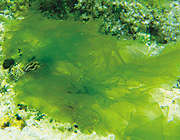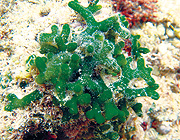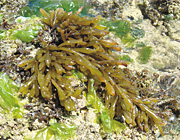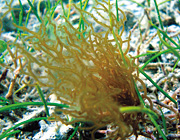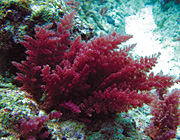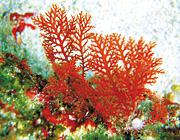Distribution and taxonomy
Japan is an island country that stretches from the subtropical Ryukyu Islands in the south to the subarctic island of Hokkaido in the north, and is known to be one of the most biodiverse areas in the world, with the records of more than 1,500 species of seaweeds.
Subarctic species including kelp(Saccharina) can be found along the coast of Hokkaido and the Pacific coast of the Tohoku region(northeastern part of Honshu) and are strongly influenced by the cold Oyashio current. Other regions of Japan in Honshu, Shikoku and Kyushu Islands have a temperate climate, and temperate species such as Undaria are dominant here. On the other hand, subtropical species including Halimeda and Caulerpa are distributed in Ryukyu Islands, which is influenced by the warm Kuroshio current.
In general, the makeup of seaweeds species differs from region to region. Green algae are relatively more common in Okinawa and similar warm waters; however , brown algae, such as kelp, often dominate relatively cold-water regions like Hokkaido. Interestingly, smaller seaweeds are common in the south, especially Okinawa, whereas larger seaweeds are more often found in the north.
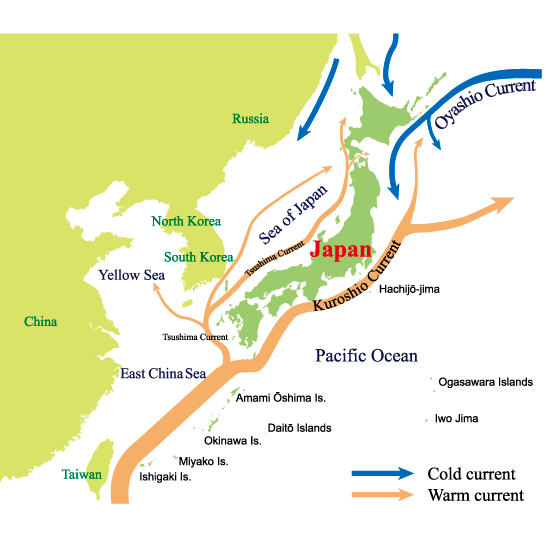
In Okinawa, species such as Halimeda and Codium are some commonly found green algae, and edible species such as Monostroma and Caulerpa also belong to this group. It is believed that the ancestors of terrestrial plants are the green algae.
In Okinawa, common edible species and Sargassum fusiforme and Cladosiphon okamuranus. Brown algae often are brownish in color, because of a pigment of the xanthophyllys, called fucoxanthin.




